#St. Aubert
Explore tagged Tumblr posts
Text
Iconic Mont Saint-Michel Abbey celebrates 1,000 years
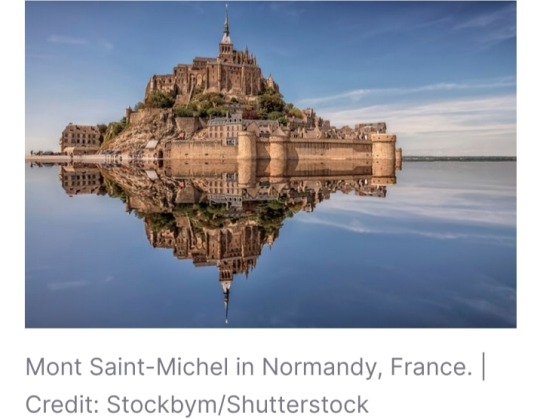
By Solène Tadié
13 June 2023
It was exactly a millennium ago that the first stone of the abbey church of Mont Saint-Michel in French Normandy was laid.
The monument that the poet Victor Hugo called the “Khéops of the West” has since become one of the highest symbols of French Catholic identity and one of the most important pilgrimage sites in the world, with more than 3 million visitors a year.
This important anniversary will give rise to a number of celebrations that will continue through the fall of 2023.
Standing on relatively inhospitable terrain, enthroned on a rocky islet less than a kilometer in diameter, surrounded by a vast sandy plain subject to the vagaries of the tides, the UNESCO World Heritage Site has stood the test of time, offering itself as a spectacle for dozens of generations to see.
Indeed, the history of this place of prayer and pilgrimage was as precarious and tumultuous as its surroundings.
While the construction of the present abbey church dates back to 1023, a first church dedicated to St. Michael the Archangel is said to have been built as early as 708 on the mount, then known as Mont-Tombe.
According to “Revelation,” the oldest text reporting the context of the abbey’s construction (written around the beginning of the 11th century), St. Aubert, then-bishop of Avranches, was visited three times in a dream by the archangel, who instructed him to erect a sanctuary in his honor on the summit of the site “so that he whose venerable commemoration was celebrated at Mont Gargan [the first great shrine dedicated to the Leader of the Celest Army, in the Puglia region of Italy] might be celebrated with no less fervor in the middle of the sea.”
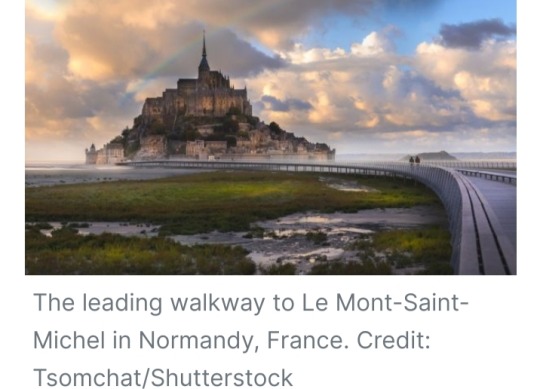
St. Aubert undertook the building of a first church with the capacity of about a hundred people, consecrated in October 709 and given the name Mont-Saint-Michel-au-péril-de-la-Mer.
The prelate installed 12 canons there, responsible for praying the Divine Office and welcoming local pilgrims.
The canons were replaced in the 10th century by Benedictine monks at the behest of Richard I, Duke of Normandy, who had little taste for the canons’ opulent lifestyle.
In 1023, the order undertook the construction of the abbey church we know today, based on three rock-cut crypts and the former chapel.
This ambitious project marked a decisive step in the international outreach of the site, where miracles abounded as the flow of pilgrims from all over Christendom expanded.
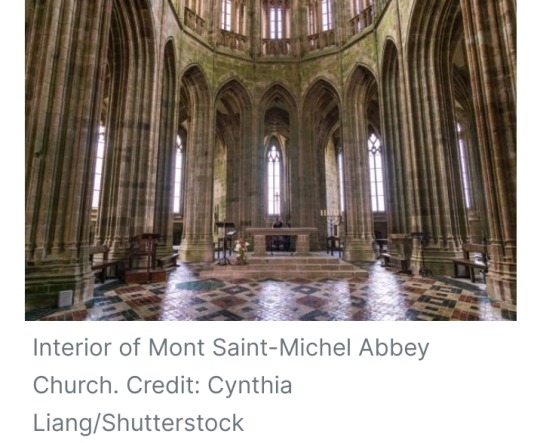
“This edifice is like Noah’s ark laid over the crypts,” said François Saint-James, a guide and lecturer at Mont Saint-Michel, in an interview with Le Devoir newspaper, underlining the architectural prowess required for this medieval project.
“It was a time when France was covered with a white cloak of churches, as a monk from Cluny once wrote. You have to imagine the gigantic scale of the work.
The granite blocks were cut on the Chausey islands, 34 kilometers from here.
Caen stone, a soft, light stone that’s easy to carve, was used. ... When, in the midst of the Hundred Years’ War, the Romanesque choir collapsed, it was rebuilt in flamboyant Gothic style.”
While the abbey’s architectural evolution continued uninterrupted until the 19th century, one of its highest points was the construction of “La Merveille” (The Wonder) in the 13th century, a jewel of Norman Gothic art.
It consists of two buildings on three levels, supported by high buttresses, with a cloister and refectory, 80 meters above sea level, beneath which were built an almshouse, a storeroom, and guest rooms.
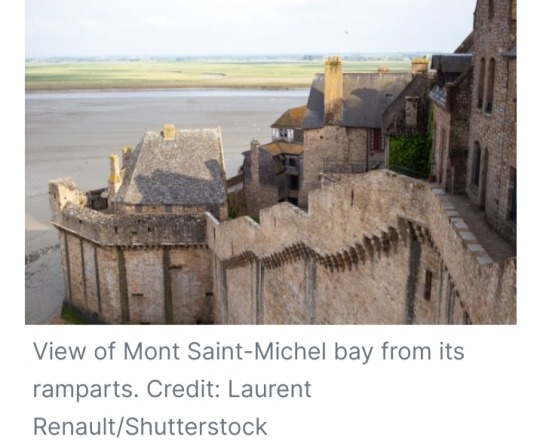
The fame of the shrine started to decline in the 17th century, when part of the abbey was turned into a prison by the royal power.
Seized by central government during the revolution, it became a detention center for priests deemed hostile to the Jacobin terror.
In the 19th century, the site, listed as a historic monument in 1874, was gradually returned to monastic life and its original vocation as a sanctuary.
The abbey’s distinctive silhouette was further enhanced by a neo-Gothic spire in 1897, topped by a gilded statue of the archangel.
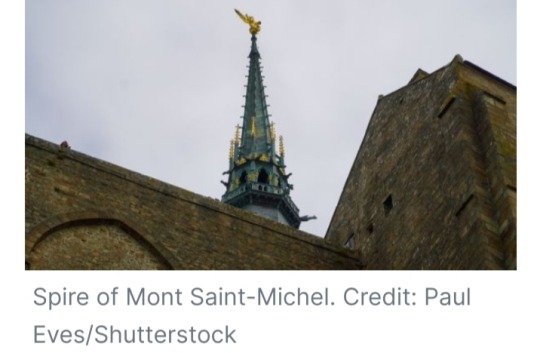
To mark its 1,000th anniversary, a special tribute is being paid to the abbey that many have dubbed the “Wonder of the West” with the exhibition “La Demeure de l’Archange” (The Archangel’s Abode), retracing its glorious and tumultuous history through some 30 masterpieces, until November 5.
Many of these items, which include sculptures, scale models, statues, and silverware, will be on display to visitors to the abbey for the first time.
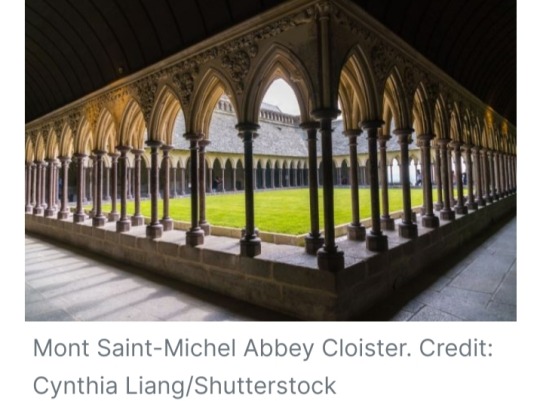
Another highlight of the many celebrations taking place over the summer and part of the autumn will be the “Millennium Solstice,” a never-before-seen light show projected onto Mont Saint-Michel from various spots in the bay on the evening of June 23.
The beauty of this sacred site, trodden by millions of pilgrims over the centuries, has been celebrated and immortalized in the writings of many great men of letters over the last few centuries, from Gustave Flaubert to Théophile Gautier and Victor Hugo.
In particular, it inspired the novel “Les Merveilles du Mont Saint-Michel” (1879) by the prolific writer Paul Féval.
He had already paid tribute to the monument a few years earlier, in “La Fée des grèves,” with these lines often quoted by admirers of the famous Mont:
“Twilight broke. Mont-Saint-Michel was the first to emerge from the shadows, offering the golden wings of its archangel to the reflections of the dawning dawn; then the sides of Normandy and Brittany lit up in turn.
Then again, a sort of light steam seemed to rise from the receding sea, and all was veiled except for the statue of Saint Michael, which dominated this wide ocean of mist.”
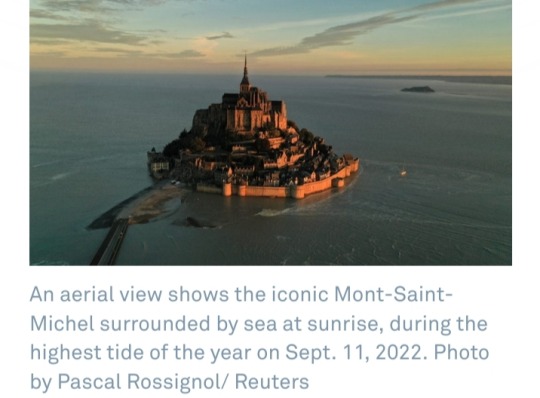
#Mont Saint-Michel#Khéops of the West#Victor Hugo#UNESCO World Heritage Site#pilgrimage#St. Aubert#Revelation#Mont-Saint-Michel-au-péril-de-la-Mer#Richard I#Duke of Normandy#La Demeure de l’Archange#The Archangel’s Abode#Millennium Solstice#Gustave Flaubert#Théophile Gautier#Paul Féval#Les Merveilles du Mont Saint-Michel#La Fée des grèves#St. Michael the Archangel
28 notes
·
View notes
Text

Skull of St. Aubert in the St. Gervais church of Avranches, Normandy region of France
French vintage postcard
#postcard#aubert#ansichtskarte#briefkaart#france#gervais#photography#carte postale#vintage#postkarte#skull#photo#historic#postkaart#ephemera#st. gervais#avranches#sepia#church#region#french#normandy#tarjeta#postal
19 notes
·
View notes
Text

Professor Annabel St Aubert
She/Her
Name: Annabel St Aubert
Title: Foremost Correspondent
Motifs: eight-pointed stars, diamonds, clematis flowers, stars
Music: Beethoven’s Für Elise
#fallen london#my post#annabel st aubert#foremost correspondent#fallen london oc#my oc stuff#my ocs#professor st aubert#professor annabel st aubert#the moonstone club
10 notes
·
View notes
Text
Reading about Ann Radcliffe's The Mysteries of Udolpho
An innocent, and virtuous young woman, the orphaned Emily falls in the hands of a heartless villain named Montoni. He confines her in a grim and isolated castle full of mystery and terror. There she must cope with an unwanted suitor, Montoni’s threats, and the terrors and wild imaginings that threaten to overwhelm her.
Jonathan Harker: she's just like me fr
#I need to read it because it's genre defining#the mysteries of udolpho#emily st aubert#jonathan harker#dracula#dracula daily
45 notes
·
View notes
Text
Emily is also from the Gascogne?!
Lmao, I will never be free from characters from the Gascogne
#Emily st aubert#D’Artagnan#the mysteries of udolpho#the three musketeers#holla kaja is live blogging books again
0 notes
Text

here we are again, my old friend. Time for a re-read. In case you were curious, this is The Mysteries of Udolpho, by Ann Radcliffe. The heroine, Emily St. Aubert (the name! the naaaame!) is the most incredible Mary Sue to ever Mary Sue and I love her for it. She is beautiful, gentle, good at everything, but most importantly the most Pure and Good Girl Ever. Descriptions go on and on for pages. In fact, everything is described to DEATH in lush and exhausting detail. But! You get to read things like this-
"The deepest shade of twilight did not send him from his favourite plane-tree. He loved the soothing hour, when the last tints of light die away; when the stars, one by one, tremble through æther, and are reflected on the dark mirror of the waters; that hour, which, of all others, inspires the mind with pensive tenderness, and often elevates it to sublime contemplation. When the moon shed her soft rays among the foliage, he still lingered, and his pastoral supper of cream and fruits was often spread beneath it. Then, on the stillness of night, came the song of the nightingale, breathing sweetness, and awakening melancholy."
purple prose and mary sues are an important part of the literary ecosystem and should be treasured.
#do I recommend it?#wholeheartedly#IF you've got the spoons to dig your way through this one hoo boy#sadly no incest unless it was a side character I've forgotten about#a LOT happens in this book#the plot's very intricate and interesting#but there's a lot of characters to remember#The Mysteries of Udolpho#Ann Radcliffe#gothic literature
13 notes
·
View notes
Text
DD Season 2 Places Where Filming Occurred: Update to November 2023 post.
I originally did a post in early November of 2023 with filming spoilers up to that point. Link. Some of my speculations have already been confirmed. Here are some additional tidbits I collected. I did not have the time to research these in much depth. I would love it if someone does!

Chapel Saint Aubert in Mont St. Michael
A chapel may be a good spot for a resurrection.

Shipwrecked boat on St. Malo Beach. Filmed summer 2023 and November 2023.
Hoverport Tunnel: I think this one is most important for TDers.
The tunnel was filmed in November and December. The actor who plays Losang posted about it here:

So, at first, I thought this might be the Carol/Daryl reunion spot, but it's awful late in the season for that. Carol, Daryl, and Cordon were seen filming at this tunnel location. It was under tight security and closed to the public. Here are some more shots of the tunnel and some behind the scenes pictures of what is in part of the tunnel.
The outside:
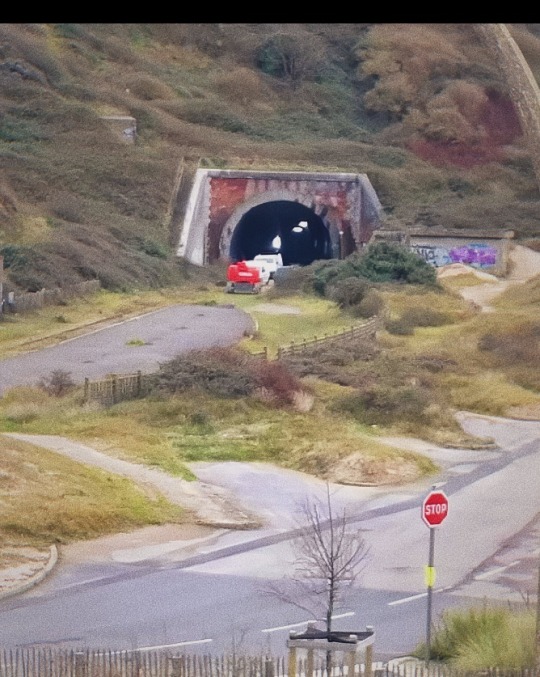
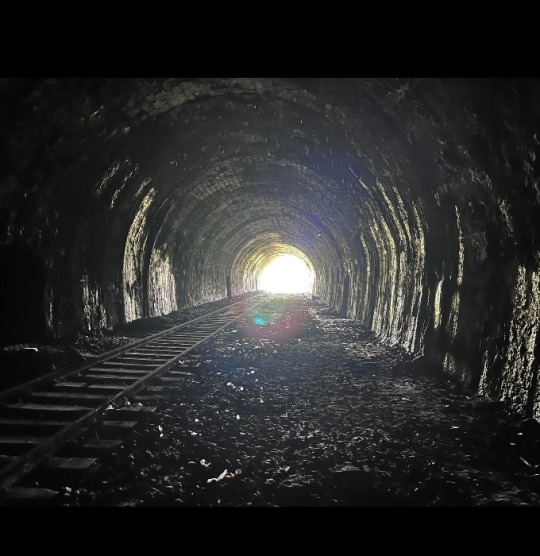
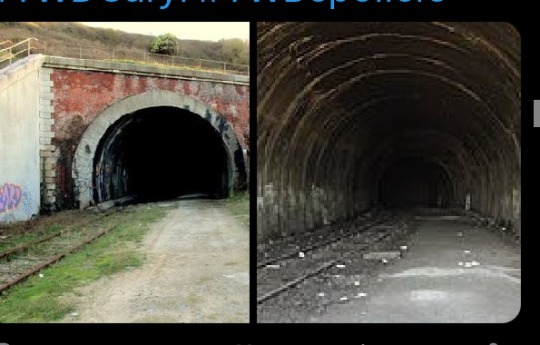

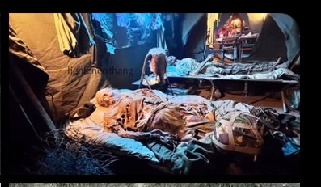
Some of the final scenes were filmed here and not on location:

A few things about the tunnel. It is an old Hoverport Channel Tunnel connecting France to England. However, that doesn't mean that is how it will be used in DD. Also, just because the tunnel shoot was the last location, doesn't NECESSARILY mean that it will be where the season ends. I do think it will be very important, and it's something they tried to keep more under the radar than the rest of the location shoots. The tracks through the tunnel are obviously hugely symbolic in TWDU as places where characters choose a path that will lead to their salvation or their destruction. They also remind me of Daryl in Alone sitting next to the tracks and not choosing which way to go until the Claimers arrive. Even though Beth may not appear in the tunnel, I have a feeling it will an important location on the way to a Beth/Daryl and Beth/Carol reunion.
I know many people are saying this will be how season 2 ends:

That might very well be the case, but filming continued at the tunnel location AFTER these scenes were filmed. As we know from TOWL, they often film MULTIPLE endings especially if there is an important reveal at the end.
Thoughts?
#team delusional#bethyl#team defiance#beth greene lives#twd daryl and beth#beth is alive#beth greene#beth is coming
22 notes
·
View notes
Text
Leia Organa as the Gothic Heroine
“Through a dream landscape, . . . a girl flees in terror and alone amid crumbling castles, antique dungeons, and ghosts who are never really ghosts.
She nearly escapes her terrible persecutors, who seek her out of lust and greed, but is caught; escapes again and is caught; escapes once more and is caught . . . [and] finally breaks free altogether, and is married to the virtuous lover who has all along worked (and suffered equally with her) to save her."
-Leslie A. Fledler, Love and Death in the American Novel

The gothic novel is a genre of literature that has grown increasingly compelling to me. Defined by its mixture of romanticism and horror— or “wonder and terror”, with a “loose literary aesthetic of fear and haunting”— these stories are known for their forbidden castles, ghostly mysteries, and, most centrally, their heroines, fleeing terrified into the night in a flowing white gown…
Over the years the gothic has become a genre dominated by the feminine and by women writers. And even though the first example of gothic literature, Horace Walpole’s The Castle of Otranto, was written by a man, the story is largely focused on its heroines. The central plot thread sees a corrupt tyrant prince pursuing a much younger princess for the sake of marriage and her desperate attempts to escape him, as she flees through his castle, through twisted corridors, trap doors, and all manner of danger.
I began to think of the relation between the archetype of gothic heroine and Star Wars’s female lead, Princess Leia Organa. After all, she is typically clad all in white and on the run from a dastardly Imperial villain of some sort. And it would not be so difficult for the Death Star to serve as an old manor, filled with secrets and danger… trap doors (garbage chutes), gaping chasms, masked phantoms (Sith Lords) and terrible, power-hungry old men.

The gothic heroine is a young woman often characterized by her virtue, innocence and beauty. She may be born into a position of high social status, with a wealthy or aristocratic family, or even be full-fledged royalty. Some time early in the story, however, she loses her privilege and power… orphaned, imprisoned, or otherwise inconvenienced. In Ann Radcliffe’s The Mysteries of Udolpho, for instance, our protagonist Emily St. Aubert lives an idyllic life with her well-to-do parents, only for both to die and her fortune to be lost in the first act, where she is then given into the power of her aunt and eventually her villainous uncle-by-marriage, Montoni. Leia, too, was a happy and beloved child as the Crown Princess of Alderaan, even with the shadow of the Empire looming overhead… but is captured on a fateful mission for the Rebellion and sees her planet destroyed for her troubles.
And while a gothic heroine may be physically frail she has the mental fortitude and agency to be the one who drives the plot forward. Leia, too, subverts being placed the box of “damsel in distress” with her strong will and her active fierce participation in the rebel cause.
The consistent pattern of “escaping and being caught” is another that Leia follows quite clearly throughout the original trilogy… when we first meet her, she is fleeing from her Imperial pursuers, only to be overpowered and captured. She’s taken aboard the Death Star, endures torture, and gets rescued… only for the next movie to involve yet another game of pursuit between her and Vader where she’s eventually caught yet again at Bespin. After another escape, she opens the subsequent film with an attempt to rescue her (not-so) “virtuous lover” from his prison… and she is made a slave. She escapes with her own ingenuity to rejoin the Rebellion, is nearly defeated in the perilous final battle at Endor, but with the help of her allies, wins the day and all is made right. A typical fairy tale ending.
And then there are her villainous persecutors, of which there are primarily three— Vader, Tarkin, and Jabba.
The gothic heroine is often menaced by a powerful man,?usually bearing misogynistic or patronizing sentiments. He is dark and threatening, yet can also be alluring… and the heroine strives to escape his oppressive power. So too with Leia, as representative of the Rebellion, seeking to destroy the oppression of the Empire.
In short, Star Wars is a very melodramatic, archetypal tale, and Leia’s journey both illuminates and subverts that.
#star wars#leia organa#wilhuff tarkin#darth vader#gothic heroines#villain x heroine#tarkin x leia#willeia#leia and vader#star wars a new hope#terrible analysis by tantive
59 notes
·
View notes
Photo
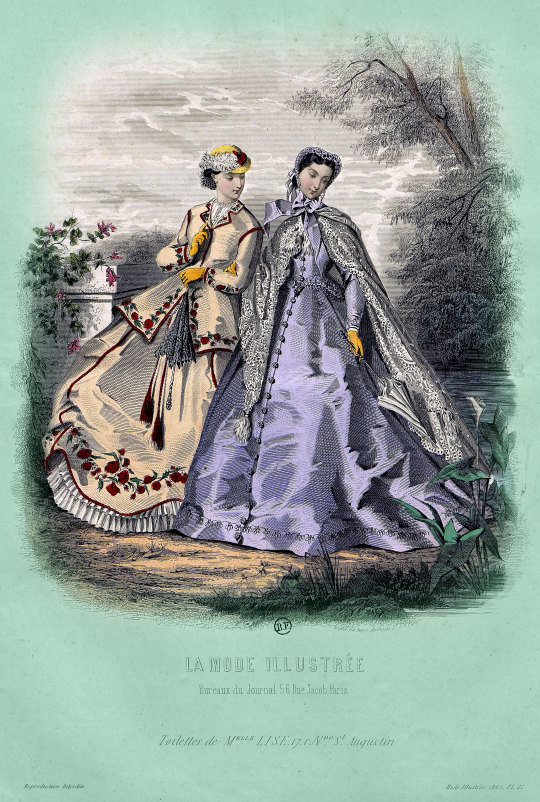
La Mode illustrée, no. 22, 28 mai 1865, Paris. Toilettes de Melle Lise, 17, r. Nve. St. Augustin. Ville de Paris / Bibliothèque Forney
Description de toilettes:
Robe en toile écrue très-pâle. — Le bas de la jupe est bordé avec une corde en laine rouge, remontant sur toutes les coutures réunissant les lés; au-dessus de cette corde, c'est-à-dire sur le bord de la robe, se trouve une guirlande de coquelicots avec feuilles, et tiges, le tout brodé en laine. La jupe est nouée par devant avec une cordelière de laine rouge. Corsage blanc, en nansouk, brodé au point russe, en laine rouge. Paletot pareil à la robe, bordé et brodé comme la robe. Chapeau rond en paille d'Italie avec grande plume blanche et petite plume rouge. Gants nuance chamois. Ombrelle blanche recouverte de dentelle noire.
Robe en foulard lilas, festonnée par devant depuis les pieds jusqu'à la taille, avec des boutons en passementerie lilas, ornés de perles blanches. Au-dessus de l'ourlet de la jupe (cet ourlet a seulement 3 centimètres de largeur) se trouve une légère broderie en lacets lilas, très-étroits, mélangée de perles blanches. Corsage montant, orné d'une basque en forme d'habit, entièrement faite en passementerie lilas, mélangée de perles blanches. Le corsage est boutonné devant jusqu'au cou. Grand bournous en dentelle de laine blanche. Chapeau en tulle lilas, brodé en perles blanches, orné d'une très-courte frange en marabouts lilas qui entourent le visage. Ce chapeau a été dessiné chez Mme Aubert, modiste, rue Neuve-des-Mathurins, 6.
—
Dress in very pale ecru canvas. — The bottom of the skirt is edged with a red woolen cord, going up on all the seams joining the lengths; above this cord, that is to say on the edge of the dress, is a garland of poppies with leaves and stems, all embroidered in wool. The skirt is tied in front with a red wool cord. White bodice, in nansouk, embroidered in Russian stitch, in red wool. Overcoat similar to the dress, bordered and embroidered like the dress. Round Italian straw hat with large white feather and small red feather. Chamois shade gloves. White umbrella covered with black lace.
Dress in lilac scarf, scalloped in front from the feet to the waist, with lilac trimmings buttons, adorned with white pearls. Above the hem of the skirt (this hem is only 3 centimeters wide) is a light embroidery in very narrow lilac laces, mixed with white pearls. High bodice, adorned with a basque in the shape of a coat, entirely made of lilac trimmings, mixed with white pearls. The bodice is buttoned in front to the neck. Large bournous in white wool lace. Hat in lilac tulle, embroidered with white pearls, adorned with a very short fringe of lilac marabouts which encircle the face. This hat was designed by Mme Aubert, milliner, rue Neuve-des-Mathurins, 6.
#La Mode illustrée#19th century#1860s#1865#on this day#May 28#periodical#fashion#fashion plate#description#color#Forney#dress#Lise#cape
67 notes
·
View notes
Text
@treeaspen writes:
#girls give him a bachelor party
@c-schroed writes:
#a GHSG party sounds nice indeed
@per4mancecheck writes:
#bach party #yes brides to be have been abbreviating it such
HMMMMMMM
Jonathan Harker: w-what's all this???
Catherine Moreland: we've decided to throw you a bach party
Pamela Andrews: we're all just so happy to see your virtue at last rewarded
Jonathan Harker: uh... what? Oh you mean a bachelor's party?? I'm not sure Sister Aga-
Emily St. Aubert: we do not
Christine Daée:
Jauchtet Gott in allen Landen!
Was der Himmel und die Welt -
#gothic heroine support group#Jonno's stag#there's a lot of things that go on at a bachelor's party that are not particularly convent appropriate#but Jonno can have a little lutheranism. as a treat#the joke hear is Johann Sebastian Bach#both joke and playlist courtesy of per4mancecheck
44 notes
·
View notes
Photo




Saint of the Day – 13 December – Saint Aubertus of Cambrai-Arras (c600-c669) Bishop and Confessor, Monk and Hermit, Apostle of the poor, Founder of several Churches and Monasteries in the region of what is now Belgium. Born in France in c600 and died there in c669 of natural causes. Patronages – of bakers and confectioners, merchants, Cambrai, France, Ghent, Belgium, Hainault, Belgium. Also known as – Aubert of Cambrai, Aubert of Cambrai-Arras, Aubert of Avranches , Albert…Audebertus…Authbert…Autbertus…Obrecht… The Roman Martyrology reads today: “At Cambrai, in France, St Aubertus, Bishop and Confessor.”
(via Saint of the Day – 13 December – Saint Aubertus of Cambrai-Arras (c600-c669) Bishop and Confessor, – AnaStpaul)
2 notes
·
View notes
Text
Have you read...

With The Mysteries of Udolpho, Ann Radcliffe raised the Gothic romance to a new level and inspired a long line of imitators. Portraying her heroine's inner life, creating a thick atmosphere of fear, and providing a gripping plot that continues to thrill readers today, The Mysteries of Udolpho is the story of orphan Emily St. Aubert, who finds herself separated from the man she loves and confined within the medieval castle of her aunt's new husband, Montoni. Inside the castle, she must cope with an unwanted suitor, Montoni's threats, and the wild imaginings and terrors that threaten to overwhelm her.
submit a horror book!
#The Mysteries of Udolpho#Ann Radcliffe#horror books#horror#bookblr#books#horrorbookpoll#horror classics#gothic horror#gothic#18th century
8 notes
·
View notes
Text
Support Group for Victorians Stuck in Fancy Old Buildings with Creepy Aristocrats
Current Members:
Jonathan Harker
Edith Cushing
Daniel of Mayfair
Emily St. Aubert
4 notes
·
View notes
Text
I refuse to make fun of Emily St. Aubert for constantly fainting even though it does get concerning at times. Oh, she faints every chapter? Good for her. More representation for the iron-deficient folks out there. Ann Radcliffe is doing it for the fans.
32 notes
·
View notes
Note
Is Jonathan the only case of being engaged to someone (who isn't her captor) from the start?
As far as I know, he is! I, to my shame, haven't read The Mysteries of Udolpho yet, but I checked and Emily St. Aubert's engagement begins before she meets her captor, but she isn't engaged at the start of the book. She meets her fiancé at the beginning of the story, and I think she's the only other case where the Heroine is engaged when she meets the captor. Everyone else either marries the captor, ends the book single, of gets engaged after The Horrors have already begun.
7 notes
·
View notes
Text
youtube
Le Mont-Saint-Michel a la particularité d’être érigé sur un îlot rocheux, entouré d’une magnifique baie, théâtre des plus grandes marées d’Europe continentale. Le Mont et sa baie sont classés au patrimoine mondial de l’UNESCO. Entre Normandie et Bretagne, ce site grandiose, situé à 3 h 30 de Paris, est l’un des monuments les plus visités de France.
Un peu d’histoire… C’est l’environnement maritime qui avait déterminé le choix des moines du Moyen Âge de s’installer à cet endroit précis et d’y bâtir ce qui allait devenir l’un des plus extraordinaires édifices de l’architecture religieuse. Aubert, évêque d’Avranches, aurait en fondé un sanctuaire sur le Mont-Tombe en 708, après trois apparitions successives de l’archange saint Michel. Surplombant l’immensité de la baie, l’abbaye du Mont-Saint-Michel est le point d’orgue de la visite. Pour y accéder, un dédale d’escaliers et de ruelles médiévales où il fait bon se balader. Le village, protégé par des remparts édifiés du XIIe au XIVe siècles, abrite de charmantes maisons à pans de bois.
À VOIR, À FAIRE AU MONT-SAINT-MICHEL : LES LIEUX À NE PAS MANQUER
Quand le mont redevient une île !
Au Sud du département de la Manche, la baie du Mont-Saint-Michel est le théâtre des plus grandes marées d’Europe continentale. Venez assister aux grandes marées et admirez le spectacle que vous offre la nature ! Certains jours de l’année se prêtent plus à l’observation de ce phénomène. Dès que le coefficient de marée dépasse 110, le Mont redevient une île, l’espace de quelques heures. L’eau vient recouvrir le gué submersible. Le rocher est alors coupé de ses accès.
Il est fortement déconseillé de s’aventurer seul(e) dans la baie, théâtre des plus grandes marées d’Europe continentale.
Où observer le phénomène des grandes marées ?
Afin d’observer le phénomène de la marée montante et l’arrivée du mascaret, il est conseillé d’être présent 2 heures avant l’horaire de pleine mer.
Observez le phénomène depuis le Mont, les remparts, la terrasse de l’Ouest (parvis de l’abbaye dont l’accès est compris dans la visite), ou le nouveau pont-passerelle. Les jours de grandes marées, petits et grands prennent plaisir à se trouver là pour observer la mer monter à une vitesse impressionnante. C’est un moment très sympa.
La baie se révèle également un « poste d’observation » privilégié : la Roche Torin à Courtils, le Grouin du Sud à Vains-Saint-Léonard ou encore le Gué de l’Epine au Val-Saint-Père.
Les marées au Mont-Saint-Michel
Comment accéder au mont ?
Le parc de stationnement est désormais situé à 2.5 kilomètres du Mont-Saint-Michel intra-muros. Des navettes de transport gratuites et des cheminements piétonniers mènent les visiteurs jusqu’au Mont.
À pied, les visiteurs empruntent le nouveau pont-passerelle, qui se fond à merveille dans le paysage.
En navette, la dépose des passagers se fait à 400 mètres du Mont-Saint-Michel, pour réserver aux seuls piétons une vue dégagée sur le Mont et la baie.
Combien de temps pour visiter le mont-saint-michel ?
Comptez au moins une demi-journée pour avoir le temps de déambuler dans le village et sur les remparts et de monter jusqu’à l’abbaye au sommet du rocher. Si vous venez tôt le matin, vous pourrez profiter du mont dans le calme. L’été, à la tombée de la nuit, profitez de spectacles et animations nocturnes.
Les spécialités du Mont-Saint-Michel
Comment parler gastronomie au Mont-Saint-Michel sans mentionner les agneaux de prés-salés et l’omelette de la Mère Poulard ? A déguster à l’automne ou à Noel, l’agneau de prés-salés pâture d’abord 70 jours dans les prairies herbagères de la baie régulièrement recouvertes par la mer. L’omelette soufflée de la Mère Poulard se déguste elle toute l’année, directement sur le Mont.
Voilà....il ne vous reste plus qu'à faire la valise et via le Mont St Michel ! 😉

Mont Saint-Michel, France 🇫🇷
3K notes
·
View notes